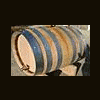Unusual and Fine Mosel:Richter Veldenz Elisenberg Spätlese 2005
This topic has been inactive for at least 365 days, and is now closed. Please feel free to start a new thread on the subject!

By
Sweetstuff
in General Non-Whiskey Alcohol
By using this site, you agree to our Terms of Use.
Recommended Posts